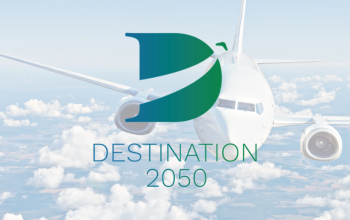
Summer of ‘23 – How did European airports perform?
The summer of 2022 saw rapid ramping up in flight and passenger numbers after the COVID-19 traffic slump, combined with disruptions in airport, ground handling, airline and network operations, resulting in a challenging operational landscape. Airports have collectively taken stock of the 2022 experience, and proceeded to take elaborate and coordinated action to improve staffing levels and operational resilience to prevent a repetition of last year. They did so successfully, as these issues did not manifest in summer 2023. Even though the industry continues to face various challenges, we can look back on this period and be content. European airports delivered a successful summer, demonstrating their resilience and adaptability.
Analysis by Daniel Skoglund from Swedavia and Jeffrey Schafer from Schiphol, the chair team of the ACI EUROPE Airport Performance Network1.
Comparing performance: 2023 vs 2022
During the summer period, from May until September 2023, at the 30+ airports which form ACI EUROPE’s Airport Performance Network, 66.3% of flights arrived and 57.7% departed on time2. This is notably lower than in the same period in 2022, when 67.1% of flights arrived and 58.1% of flights departed on time. However, while overall punctuality was down on the previous year, the gap between arrival and departure punctuality actually narrowed – a positive indication of the efforts taken by airports to improve turnaround performance and reduce time lost on the ground.
The main operational challenges for European airports
Nonetheless, while the overall assessment is a positive one, this summer was still a challenging one. The prevailing issues were linked to, most notably, continued staffing shortages in ground handling across European airports, as well as in customs, border control and air traffic control at some airports. It is worth noting that the staffing situation at handling agents related not only to the number of staff, but also their level of experience.
In addition, significant disruptions were encountered in the airspace, caused by industrial actions of French air traffic controllers, ATC staffing shortages, weather-related delays and various aerodrome- and airspace-capacity-related delays.
The severe weather over Central Europe this summer caused significant airspace restrictions, on top of the familiar flow regulations which were present as usual, causing significant delays from the first morning wave onward for multiple airports. The closure of airspace over and around Ukraine due to the Russian invasion, as well as the Air Defender military exercise, also put pressure on network operations.
An increasing problem is the long standing issue of flights arriving too early. A large number of flights, especially in the morning, arrive significantly (15-30 minutes and more) before their scheduled arrival times, triggering unforeseen peaks at airports and the surrounding airspace, which puts pressure on the airport operation and in turn delays other flights.
How can we structurally improve punctuality?
Improving punctuality is an obligation towards our passengers and serves the search for efficiency in operations. ACI EUROPE’S Airport Performance Network (APN) identifies two key action points to achieve better results:
- Collaboration must be fostered, especially in times of great challenges: not only airport to airport, or between the EUROCONTROL Network Manager and airports, but collaboration is also key among airlines, airports, ground handling agents and Air Navigation Service Providers.
- Technological harmonisation must be increased: Technological transition is an imperative in this day and age. We therefore call for harmonisation efforts, based on sharing of best practices and standards, in order to expedite innovation and drive up operational performance across Europe.
Overall, summer 2023 has shown the benefits of a collaborative approach to preventing and managing operational disruptions, where airports have delivered the required capacity based on continuous engagement with the Network Manager and other operational stakeholders. This meant that any disruptions were local rather than systemic, and overcome without them having major network-wide impacts.
There is always room for improvement, especially in driving up punctuality, which is one of the reasons why ACI EUROPE’s APN has begun publishing monthly punctuality reports. These are drawn from a sample of key airports across Europe, and can be used to observe the evolution of arrival and departure punctuality, determine the reasons for specific shifts in performance, and to begin managing and improving performance. A proactive and coordinated approach based on information sharing between stakeholders is one of the key means in ensuring such improvement, which has clearly shown its merits this summer. We have now to uphold this as standard for the summers to come.
1 See https://www.aci-europe.org/component/attachments/attachments.html?id=2538 for a list of these airports.
2 All flights are considered to be punctual when they are delayed up to 15:59 mins.



